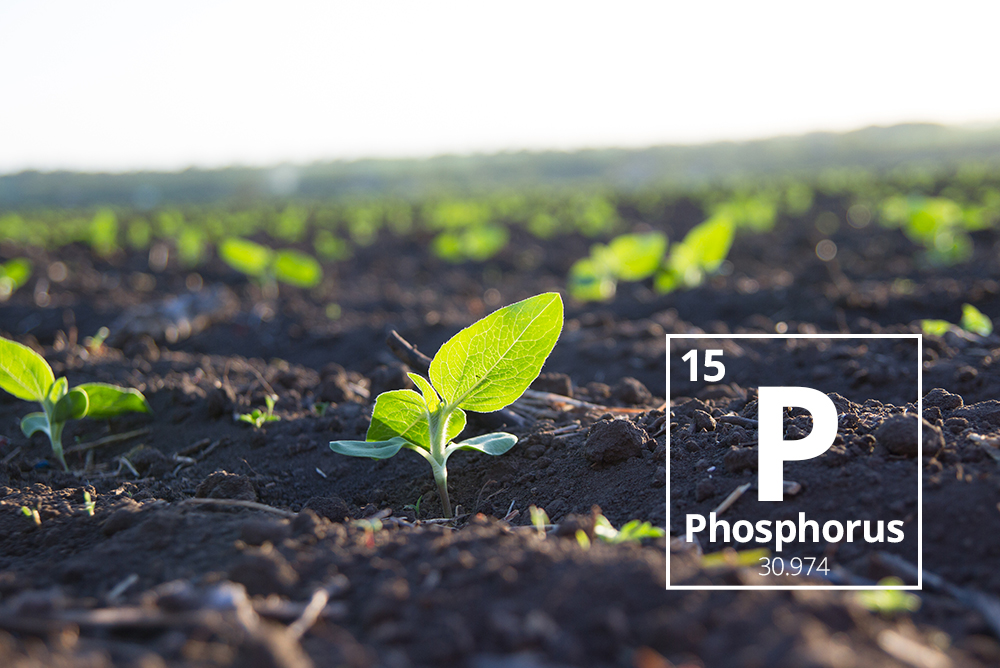
AGRICULTURAL NUTRIENT PROFILE: PHOSPHORUS-PART 3
Six strategies for building phosphorus levels in the soil
In our series on Phosphorus, we’ve gained a few crucial insights about this vital nutrient:
- P is essential to plant health, growth and yield. It plays a central role in photosynthesis, energy, protein synthesis and more.
- Phosphorus has very limited mobility in the soil. Plant availability is a challenge.
- Soil contains soluble, slowly soluble and insoluble Phosphorus. Insoluble P is not plant available.
- The majority of cropland in western Canada is considered Phosphorus deficient (approximately 60%).
- At the time fertilizer is applied, it only provides for 10% to 30% of a crop’s Phosphorus requirements that year. The remainder becomes unavailable.
The last two points reinforce the importance of building and maintaining adequate levels of Phosphorus in the soil as part of an ongoing agronomic strategy.
Building phosphorus levels involves a long-term commitment. But given the potential return on investment (and inverse risk in the event of a P deficiency) it is a strategy worth pursuing. Many agronomists recommend a four to eight-year plan.[1] This is due to the way different types of phosphorus in the soil function within the phosphorus cycle. It also takes into account the time required to replenish the soil and convert various phosphorus sources into a plant available solution.
6 phosphorus building strategies
1. Conduct regular soil testing: Knowing available Phosphorus levels is too important to leave to guesswork. A soil test can indicate the amount of plant-available Phosphorus in the soil.
There are multiple soil tests that can measure for Phosphorus levels in the soil. A&L Labs Canada, for example, has five tests at their disposal. Bicarb and Bray P1 tests are two common indicators. On a Bicarb test, A&L would like to see a P reading of over 20 ppm for cereal and oilseed production. In their Bray P1 test, that number should be over 35 ppm.
A&L has also created a useful resource for growers, called Soil Optimum Levels Based on CEC. This chart outlines poor, medium, good and high P soil test levels according to the soil’s Cation Exchange Capacity (CEC). (Click here for a free download).
Learn more about Understanding CEC and % Base Saturation.
At a minimum, soil testing should be conducted every three years. Testing multiple years will indicate how your levels are trending and provide a benchmark to measure against. If you are committed to rebuilding P in your soil, annual testing will allow you to closely monitor your build strategy and make adjustments where required.
2. Calculate P Uptake and Removal levels based on your crop: The crop will generally remove more Phosphate from the soil than is added through a fertilizer strategy. Taurus has developed our Crop Nutrient Uptake and Removal chart to help you calculate requirements according to crop (click for a free download).
The professionals at A&L Canada Labs use the following calculation as a general rule of thumb for building Phosphate:
(C.E.C. /2) = number of lbs. it takes to raise your soil phos level by 1 ppm
Note: This is over and above the crop removal for that year.
3. Build P levels by using a slow-release or root-activated fertilizer: This way, your plants can access the P when required, leaving reserves in the soil for use later in the season.
4. Pay attention to placement: Because P has limited mobility in the soil, fertilizers should be banded around the seed to ensure maximum plant uptake.
However, seed row applications can ultimately never be high enough to build phosphorus levels in the soil, as it will only serve to get the levels closer to crop removal requirements. For example: a 70 bushel wheat crop needs 42lbs of phosphorus for removal alone, making it tough to apply more than 42lbs in the seed row without hurting the seed.
5. Be aware of other factors affecting P uptake: Soil type can play a factor. It is generally easier to build P soil test levels in course soils with less clay than in heavy clays. High pH soils (>7.5) require more phosphate to build soil test levels. Note: Sands have a higher optimum ppm to satisfy the crop’s in-season needs.
6. Consider fertilizer as an investment vs. a cost: Soils with healthy Phosphorus levels result in greater crop potential year-in and year-out. Rebuilding Phosphorus levels can take many years, but as an agronomic strategy it is a wise use of resources.
[1] “Building and Maintaining Adequate Phosphorus and Potassium.” Agri-Briefs. Winter 2004-2005, No. 6. Potash & Phosphate Institute, Norcross, GA.

